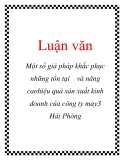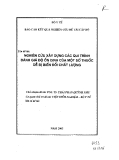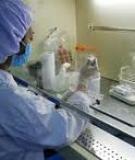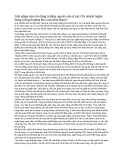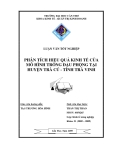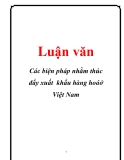Assessment of the effects of below-zero temperatures on photosynthesis and chlorophyll a fluorescence in leaf discs of Eucalyptus globulus
J.S. Pereira
L.F. Serrano, M.M. Chaves, M.H. Almeida
Inst. Sup. Agronomia, 1399 Lisbon Codex, Portugal
and -5°C, we measured slow fluorescence kinetics of chlorophyll a and photosynthetic capacity at 25°C with saturating light and C02 concentration (provided by a bicarbonate/car- bonate buffer, pH 8.7, giving rise to a C02 concentration of approximately 5%), using an LD-2 Hansatech oxygen electrode + fluoro- meter. Leaf discs were illuminated with an LS-2 Hansatech light source. Fluorescence was induced with red light at 650 mm and was detected at 760 nm. Control discs were kept in the dark at 25°C for the same periods.
When the methods of injury assessment were to be compared, whole plants were frozen and the leaf discs collected for measurements of photosynthetic oxygen evolution and fluores- cence. Tissue necrosis was expressed in terms of mean % injury per leaf per plant.
The sensitivity of plants to low tempera- tures has been assessed by a number of methods, including measurements of visible symptoms of injury, vital staining techniques, protoplasmic streaming, plas- molysis and changes in the pattern of chlorophyll fluorescence kinetics (Baker et al., 1983; MacRae et al., 1986). The aim of our study was to test the possibility of using changes in photosynthetic capaci- ty and in slow fluorescence kinetics in leaf discs of Eucalyptus globulus to screen resistance to below-zero temperatures, which we compared with the classic tissue necrosis method.
Results
Materials and Methods
Introduction
Leaf discs (10 cm2) of E. globulus potted plants were subjected to low temperature treatments. They were placed in the dark, inside an alumi- num box floating in a 10 I bath containing ethyl- ene glycol. After 2 h of exposure at -2, -3, -4
The effects of the temperature treatments on photosynthetic capacity (PN) of the eucalypt leaf discs are shown in Fig. 1. Values of PN measured either at 700 or 2500 pmol quanta.m-2’s-1 are slightly increased in treatments of 2 h at -2 and - 3°C, whereas in treatments at -4 and
0.71, P <0.001 with Rfd being the depen- dent variable.
- 5°C photosynthesis dropped to values close to or below zero.
The ratio of fluorescence decrease to steady-state fluorescence, termed Rfd or (Fp -Fr)/Fr according to Lichtenthaler and Rinderle (1988), showed some decline in eucalypt leaf discs after 2 h of treatment at - 4°C (Fig. 3). Values of about 50% of the controls were recorded when the treat- ment was at -5°C.
Measurements in young and old leaves confirm the results obtained with mature leaves (Fig. 2), with no significant differ- ences in sensitivity among leaf ages. Discussion and Conclusions
Two hours of exposure at -4 and -5°C reduced the photosynthetic capacity by 90 and 130%, respectively, in comparison to the control. Inhibitory effects of low tempe- ratures were consistently more pronoun- ced at 2500 than at 750 !mol quanta!m-2!s-!. This seems to indicate that photoinhibition took place at high pho- ton flux density in low temperature- stressed leaves.
Comparing the percentage of tissue necrosis, measured 1 wk after the treat- ment, with Rfd values gave rise to a linear regression Y = 3.527 - 0.026 x, (R 2 =
used as reliable screening tests for the detection of low temperature effects on leaves of E. globulus.
References
Baker N.R., East T.M. & Long S.P. (1983) Chil- ling damage to photosynthesis in young Zea mays. 11. Photochemical functioning of thyla- koids in vivo. J. Cxp. Bot. 34, 189-197 Rinderle U. (1988) The Lichtenthaler H.K. & role of chlorophyll fluorescence in the detection of stress conditions in plants. CRC Crit. Rev. Anal. Chem. 19 (suppl. 1 ), S29-S85 MacRae E.A., Hardacre A.K. & Fergusson I.B. (1986) Comparison of chlorophyll fluorescence with several other techniques used to assess chilling sensitivity in plants. Physiol. Plant. 67, 659-665 Smillie R.M., Nott R., Hetherington S. & Oquist G. (1987) Chilling injury and recovery in deta- ched and attached leaves measured by chloro- phyll fluorescence. Physio/. Plant. 69, 419-428
The increasing delay of the fluorescence decrease kinetics to reach the final stea- dy-state fluorescence, which is well expressed by the decrease in Rfd values when treatment temperatures declined, is in accordance with results reported by several authors (MacRae et al., 1986; Smillie et al., 1987). Such alterations in the fluorescence kinetics indicate damage of the photosynthetic function. However, we cannot tell whether the disturbances occurred during the induction period, the state I-state II transitions or the photo- synthetic C02 fixation, since Rtd values cover the whole process of photosynthesis (Lichtenthaler and Rinderle, 1988).
These results obtained using leaf discs are in agreement with earlier work with intact E. globulus plants. The degree of correlation obtained between the percent- age of tissue necrosis and either photo- synthetic capacity or fluorescence quench- ing indicates that both techniques may be













